Updated: What is Asbestos?
28 November 2023
This article was originally published in January 2020. The asbestos history timeline below was updated in November 2023. If you have any questions about the below content, please email info@luciongroup.com.
What Is Asbestos?
Asbestos is a fibrous silicate that appears naturally in the veins of igneous or metamorphic rocks of which or metamorphic rocks of there are 3 common types of asbestos:
- Chrysotile (white) | Lizardite, Antigorite
- Amosite (brown) | Grunerite
- Crocidolite (blue) | Riebeckite
Most people refer to the common asbestos types as white, brown and blue. The white Chrysotile is by far the most abundant in the world but all types are still mined across the world.
What Does Asbestos Look Like?
The colour of asbestos refers to the colour of appears naturally in the veins of igneous the natural rock from which they are mined. You cannot rely on the colour or the look of a product to determine if it is asbestos-containing or the type of asbestos it might be. In order to determine whether a material or product contains asbestos and if so, what type of asbestos it contains, sampling and testing are required.
What Is Asbestos Used For?
Known as the 'miracle mineral', asbestos was used in many products due to its versatile properties:
- Asbestos may be woven, spun or teased
- Good thermal stability/non-flammable
- Electrical resistance
- Good anti-condensation properties
- Good acoustic absorbency
- Good binding properties with cements, plastics and bitumen
- May be sprayed
- Resistant to acids
Why Is Asbestos Dangerous?
Airborne Asbestos Fibres are small enough to reach the deep lung tissue and have no way of being pushed out via breathing so the body has to use other methods to High tensile strength get rid of them.
The main method is to try and dissolve the foreign body with acids however asbestos is resistant to acid. As a result, the acid damages the tissues surrounding the asbestos fibres. This causes scar tissue and other medical effects known as asbestos-related diseases.
A History Of Asbestos (1870-2023)
- 1870
-
Asbestos was first imported into the UK in 1870.
Known as the 'miracle mineral', asbestos was used in many products due to its versatile properties.
Asbestos is a fibrous silicate that appears naturally in the veins of igneous or metamorphic rocks of which or metamorphic rocks of which there are 3 common types of asbestos:
Chrysotile (white) | Lizardite, Antigorite
Amosite (brown) | Grunerite
Crocidolite (blue) | RiebeckiteMost people refer to the common asbestos types as white, brown and blue. The white Chrysotile is by far the most abundant in the world but all types are still mined across the world.
- 1906
-
The first evidence was given to the Departmental Committee on Industrial Diseases relating to the death of a man from an asbestos-related condition in 1906.
The dangers of asbestos were starting to come to light but the use of asbestos during construction continued.
- 1924
-
The first published case to ascribe asbestosis to a cause of death was that of Nellie Kershaw.
Nellie worked at the Turner and Newall factory in Rochdale from 1917, this was the first factory to produce Asbestos products on an industrial scale. The department in which Nellie worked was in the spinning room. The spinning room took raw asbestos rock, and converted it into a host of products.
In 1922, five years after starting work, Nellie fell ill and then by 1924 she had died. The inquest which followed Nellie’s death was the first on an Asbestos worker.
It wasn’t until 1927, that her disease was given the name “Pulmonary Asbestosis”- Nellie was the first recorded case of Asbestosis. Fast forward then to 1931, where studies on her case lead to the Asbestos industry regulations. Nellie had worked there for seven years, and it then took another three years for the name of the disease to be chosen and a further four years before the asbestos industry regulations came into place so seven years later from her death to the regulations.
- 1930
-
The first published case to ascribe asbestosis to a cause of death was that of Nellie Kershaw.
Nellie worked at the Turner and Newall factory in Rochdale from 1917, this was the first factory to produce Asbestos products on an industrial scale. The department in which Nellie worked was in the spinning room. The spinning room took raw asbestos rock, and converted it into a host of products.
In 1922, five years after starting work, Nellie fell ill and then by 1924 she had died. The inquest which followed Nellie’s death was the first on an Asbestos worker.
It wasn’t until 1927, that her disease was given the name “Pulmonary Asbestosis”- Nellie was the first recorded case of Asbestosis. Fast forward then to 1931, where studies on her case lead to the Asbestos industry regulations. Nellie had worked there for seven years, and it then took another three years for the name of the disease to be chosen and a further four years before the asbestos industry regulations came into place so seven years later from her death to the regulations.
- 1931
-
On March 1st, 1932, the 1931 Asbestos Industry Regulations were implemented, aiming to regulate the levels of asbestos dust within factory environments.
The Workers Manufacturing Asbestos Products Asbestos Industry (Asbestosis) Scheme of 1931 was introduced to provide compensation for disability and death to employees engaged in specific asbestos-related occupations, where they worked for more than 8 hours per week in designated areas of employment.
- 1946
-
In 1946, the Asbestos Industry (Asbestosis) Amendment Scheme was enacted, incorporating an employer contribution to compensation for individuals who had worked in asbestos-related processes for more than 5 years.
- 1961
-
The Factories Act of 1961 expanded the scope of regulations that were originally established in 1931 to cover a broader range of workers. This extension included individuals in various occupations such as boilermakers, shipyard workers, and plumbers, ensuring that these workers were also protected and subject to the regulations designed to address the risks associated with asbestos exposure.
This significant expansion aimed to safeguard the health and well-being of a more diverse group of workers who faced potential asbestos-related hazards in their respective trades following the recognition of mesothelioma as a resulting exposure to Blue (Crocidolite) asbestos. (Wagner et al., 1960).
- 1969
-
The Asbestos Regulations of 1969 were enforced on May 14, 1970, and they introduced considerably more stringent guidelines compared to the 1931 Regulations. These updated regulations extended their coverage to encompass a much broader spectrum of asbestos-related work.
Concurrently, they aligned with a comprehensive epidemiological study focusing on the long-term health consequences of British "asbestos workers" within the industry.
- 1974
-
Health and Safety At Work Act came into force. A landmark piece of legislation that fundamentally changed the approach to workplace safety and health in the United Kingdom. It came into force on April 4, 1974, and marked a significant shift towards a more comprehensive and proactive system for ensuring the well-being of employees in various industries.
This act established a legal framework that places a primary duty of care on employers to ensure the health, safety, and welfare of their employees, as well as those who may be affected by their work activities. It emphasised the importance of risk assessment, employee involvement, and the provision of information, training, and supervision to protect workers from harm.
Furthermore, the Health and Safety at Work Act introduced the concept of the Health and Safety Executive (HSE), which is responsible for enforcing health and safety regulations, conducting inspections, and promoting best practices in workplaces across the UK.
The implementation of the Health and Safety at Work Act marked a significant step towards fostering a culture of safety and health in the workplace, with the aim of reducing accidents, injuries, and occupational illnesses and ensuring that workers could perform their jobs in a safe and secure environment.
- 1985
-
The importation of blue (crocidolite) and brown asbestos (amosite) was banned in the UK.
The prohibition of importing blue (crocidolite) and brown asbestos (amosite) into the United Kingdom represented a critical milestone in the nation's commitment to safeguarding public health and preventing exposure to highly hazardous materials.
This was a significant step forward in protecting the health and safety of both workers and the general population. It underscored the government's commitment to preventing exposure to hazardous substances and served as a catalyst for similar actions worldwide to mitigate the risks associated with asbestos.
- 1987
-
The introduction of the Control of Asbestos at Work Regulations in 1987 marked a significant milestone in occupational health and safety, bringing about enhanced protection for employees in the workplace.
By 1987, there was a growing awareness of the severe health risks associated with asbestos exposure, thanks to an increasing body of scientific research and a rising number of asbestos-related disease cases. This heightened awareness prompted the need for more comprehensive and stringent regulations.
These regulations established a comprehensive framework for asbestos management, risk reduction, and safety measures, serving as a vital foundation for subsequent developments in asbestos control and mitigation efforts.
- 1999
-
From 1990- 1999, several regulations were introduced including;
Control of Asbestos in the Air Regulations 1990. This limited the discharge of air from asbestos factories and other environmental pollution.
The Control of Asbestos at Work (Amendment) Regulations 1992 introduced the need for a plan of work and included the EU Carcinogens Directive and required to substitute with less hazardous substance
Also 1992, the Asbestos (Prohibitions) Regulations MDHS 39/4 stated the clearance indicator level is now <0.01 fibres per millilitre of air (f/ml);
In 1998, the Control of Asbestos at Work (Amendment) Regulations extended the application to all employees exposed to asbestos and required employers to keep records of risk assessments and plans of work etc.
Finally, in 1999 asbestos of all types was banned in the UK.
- 2002
-
The introduction and implementation of the Control of Asbestos at Work Regulations, specifically the Asbestos Duty to Manage, in 2002 and 2004 represented a crucial evolution in the United Kingdom's approach to managing the risks associated with asbestos.
By the early 2000s, it was well-acknowledged that asbestos remained a significant occupational hazard despite earlier regulations. Many older buildings and infrastructure still contained asbestos-containing materials (ACMs), and the risk of exposure persisted in various industries, including construction, maintenance, and demolition.
The introduction of the Asbestos Duty to Manage reflected a shift towards a more holistic approach to asbestos management. It wasn't just about regulating specific tasks involving asbestos but about recognising the presence of asbestos in buildings and taking proactive measures to minimise the risk of exposure to anyone working or present in those environments.
The duty to manage required dutyholders (those responsible for maintaining non-domestic premises) to identify the presence of ACMs in their buildings and assess their condition. This involved conducting surveys and risk assessments to determine the likelihood of asbestos fibres being released.
Once identified, the dutyholder was obligated to create a comprehensive plan for managing asbestos risks. This plan typically included strategies for containing or removing asbestos, as well as ongoing monitoring and maintenance to prevent deterioration.
The regulations stressed the importance of providing information and training to employees and contractors who might encounter asbestos during their work. Proper awareness and education were considered essential in preventing accidental exposure.
Additionally, the regulations introduced a clear legal obligation for duty-holders to fulfil their responsibilities in managing asbestos. Failure to do so could result in legal action and penalties.
The duty-to-manage approach represented a significant step toward more effective asbestos risk management in the UK.
- 2006
-
The implementation of the Control of Asbestos Regulations in 2006 was a pivotal moment in the UK's asbestos management framework.
This regulation amalgamated and streamlined existing asbestos-related legislation, unifying several key regulations to create a more comprehensive and cohesive approach to asbestos control. These included; The Control of Asbestos at Work Regulations 2002, the Asbestos (Licensing) Regulations 1983 and the Asbestos (Prohibitions) Regulations 1992.
By consolidating and clarifying existing regulations, these measures aimed to protect both workers and the public from the health risks associated with asbestos exposure, while also simplifying the legal framework for asbestos control across various sectors and industries.
- 2012
-
The Health and Safety Executive (HSE) Control of Asbestos Regulations 2012 came into force.
The driver behind remaking the regulations was to comply with the European Commission’s (“the Commission”) reasoned opinion dated 16 February 2011, Infringement number 2006/50422.
Explore the European Commission's reasoned opinion - 2017
-
The HSE publishes the first Post Implementation Review (PIR), a mandatory requirement every 5 years.
The PIR concluded that asbestos was still present in a lot of buildings across the UK. Despite this, the HSE claimed to have met its objectives and that CAR 2012 was still effective in controlling the risks of asbestos.
Recommendations for improvement included clearer differentiation between licensed and non-licensed asbestos removal, and Duty Holder and Asbestos Management Plan guidance should be improved.
HSE PIR 2017 - 2019
-
In 2019, Think Tank Respublica launched the Airtight on Asbestos Campaign calling for CLASP schools to be replaced, drawing attention to the significant risk of asbestos in schools.
- 2020
-
The Minister for Employment (Mims Davies) announces that they will be reviewing the effectiveness of CAR 2012, with further research into the current state of asbestos in buildings starting in 2021 as part of the next mandatory PIR, due in 2022.
Also 2020, Respublica published a research paper, ‘A Review of Research Policy and Practice’, highlighting the dangerous unknowns in current research, policy and practice.
- 2021
-
The Work and Pensions Committee announced that they would assess the current risk of asbestos in the workplace.
This would feed into the Health and Safety Executive (HSE) review of the Control of Asbestos Regulations 2012 effectiveness.
This included;
- What are the current risks posed by asbestos in the workplace? Which groups of workers are most at risk?
- How effective is the current legislative and regulatory framework for the management of asbestos?
- How does HSE’s approach to managing asbestos compare to the approach taken in other countries?
- Are there lessons that the UK could learn from best practice elsewhere?
- How does HSE measure and report its progress in mitigating the risks of asbestos?
- Does HSE keep adequate records of asbestos in public buildings?
- Is HSE making best use of available technology and systems to monitor the safety of asbestos which remains in buildings?
- Does HSE commit adequate resources to asbestos management in line with the level of risk?
- How robust is the available data about the risks and impact of asbestos in the workplace?
- What gaps in evidence need to be filled?
- Is HSE drawing on a wide body of international and national regulatory and industry expertise to inform its approach to the management of asbestos safety in buildings?
- How effectively does HSE engage with external stakeholders and experts about its approach to the regulation of asbestos?
- April 2022
-
The Work and Pensions Committee published its recommendations to the HSE, urging immediate action including the creation of a central asbestos register and proposal for a fixed deadline of 40 years for the removal of all asbestos was seen as a concern.
- July 2022
-
The Health and Safety Executive announces asbestos inspections of Schools across England and Wales.
- November 2022
-
Health and Safety Executive publishes its response to the Work and Pensions Committee recommendations.
The HSE rejected 3 of the recommendations including:
1. Central Register of asbestos in non-domestic buildings.
2. Asbestos strategy - a fixed deadline of 40 years for the removal of all asbestos was seen as a concern.
3. Occupation recorded on death certificates could introduce bias and would require buy-in from many Government Departments.
Also in November 2022, the First Annual Data Analysis Report Into Asbestos In UK Buildings is released by the Asbestos Testing and Consultancy Association (ATaC) and The National Organisation of Asbestos Consultants (NORAC).
- April 2023
-
After delays to publication due to consideration of the Work and Pensions Committee (WPC) report published in late April 2022, 'The Health and Safety Executive's Approach to Asbestos Management', the HSE published their Post Implementation Review (PIR) of the Control of Asbestos Regulations 2012 (S.I. 2012/632).
- August 2023
-
The Health and Safety Executive publishes it's report, 'Management of Asbestos in School Buildings 2022/23'.
The HSE conducted 421 inspections in schools across Great Britain in 2022/23 to assess how well schools were managing asbestos, in line with the Control of Asbestos Regulations 2012.The main objective was to assess how schools are fulfilling their legal responsibilities in effectively managing asbestos.
Click here to read our review.
In 2021, 2,268 people succumbed to mesothelioma, an asbestos-linked cancer, lower than previous years but still significant. Although asbestos was banned in 1999, its effects continue due to the delayed onset of related diseases.
Existing asbestos regulations call for managing and maintaining undisturbed asbestos, but the Trade Union Congress (TUC) in August 2023 stresses the inevitability of disturbance, advocating for comprehensive removal as reported by the Chartered Institute of Environmental Health (CIEH).
- Late August 2023
-
The Government instructed over 100 schools in England and Wales to close due to Reinforced Autoclave Aerated Concrete safety fears, highlighting the issue of asbestos in schools once again.
The issue of ineffective RAAC management in schools and the recommendations outlined in the HSE Asbestos In Schools Report highlight the lack of consistency when it comes to managing risk in schools, but also applies to many public buildings, including hospitals, local council buildings, libraries and prisons.
- September 2023
-
Parliament votes yes on the first reading of the National Asbestos Register Bill, A Bill to provide for a national register of asbestos present in non-domestic premises.
Part of the issue of managing asbestos in the UK is the disparity in nomenclature. Whilst we do need a national asbestos database, we also need a consensus on terminology. For example, when onboarding new clients with historical asbestos data into our proprietary software NexGen, we often identify disparities in the labelling of material types including vinyl tiles, bitumen adhesives, and lagging, for example. The joint Atac-Norac First annual data analysis report identified:
“17 different descriptors were used for Refurbishment Surveys”
and
“Over 3,000 different descriptors for product types were recorded”
“blue floor tile, brown floor tiles“
“insulation board door header, insulating board door header, AIB door header”
Whilst this isn’t an issue for us to bring this data into NexGen, which allows a multitude of options, mapping these into a national database will prove a monumental undertaking in order to make the data useful.
Without guidance on consistency, there is a real risk of future concerns in variable quality, and previously delivered hazardous material assessments and testing works having to be redone to achieve a compliant standard under the asbestos regulations.
“Ideally, when you’re collecting information about asbestos, you are freely able to describe the item or material without limit.
- November 2023
-
The second reading of the National Asbestos Bill is due November 2023. No further update as of 28.11.2023.
What Products Contain Asbestos?
- Asbestos' physical properties made it strong for applications such as cement.
- The electrical resistance asbestos has meant that it was a good product to be used in electric boxes for flash guards behind fuse carriers preventing the spark from blown fuses touching the box and making it live.
- Asbestos’ anti-condensation properties meant that it was used in places like swimming pools to prevent condensation buildup on the walls and ceiling.
- Chrysotile asbestos was so flexible that it could be manipulated into blankets, used for fire protection or aprons that could be used in chemical labs for protection.
- Excellent acoustic absorbency meant that it was a good application in theatres to prevent sound reverberation and enhance the viewer's experience.
- Its flexible nature meant that is could be sprayed combined with a bonding agent and applied to hard-to-get areas. It also meant that the areas that it was sprayed on to had an excellent even cover.
What Responsibility Do Employers Have To Prevent Asbestos Exposure?
Duty holders and employers have responsibilities to assess and manage the risks of exposure to asbestos and must ensure that the correct information and protective equipment is given to anyone who will come into contact with any potentially harmful substance in line with the Control of Asbestos Regulation (CAR) 2012.
Our asbestos management team can help you to manage your asbestos risks correctly and protect individuals and the environment from asbestos exposure. Submit an enquiry by emailing info@lucionservices.com and start managing your risks today.
Asbestos Management Plan: 12 Step Checklist
Struggling to get started with your Asbestos Management Plan? Download our free 12 step AMP Checklist Guide and take the first step to safeguard your teams, contractors, and reputation.
No Sign-Up Required
Asbestos Removal Timeline
Want to know what is involved in an Asbestos Abatement project? From asbestos survey through to 4 stage clearance certification, find out what's involved with this step by step guide to Asbestos Abatement.
Download Now
What Should You Do If You Discover Asbestos?
Does your team know what to do in the event that they find asbestos? Use our simple asbestos discovery flowchart to inform your teams about what to do when suspected asbestos is discovered.
Download Now
Asbestos Compliance: 6 Step Checklist
Download our free 6-step Asbestos Compliance Checklist and take the first step to safeguard your teams, contractors, and reputation.
No Sign-Up Required
IMPACT Magazine
Industry news delivered by Lucion Group and its subsidiary companies.
Issue 2 May 2023
No sign-up required


 NexGen
NexGen












